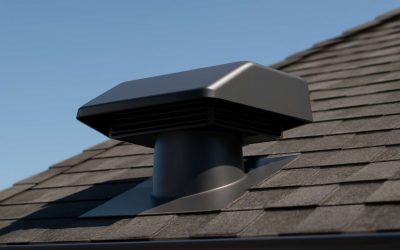
Roof vents are designed to protect your home from moisture and heat buildup. It is important to have good ventilation in your attic, especially during the winter months. Proper air circulation also prevents mold and mildew, which can be unhealthy for your family. If you have a poorly ventilated roof, the moisture can accumulate and cause structural damage. Additionally, mold and mildew can result in allergic reactions and even asthma attacks.
There are many different types of vents available for your roof. They come in different sizes, colors and styles. Your local roofer can help you choose the right vent for your home. One option is the Active Ventilation system. This type of vent was designed in the USA and uses aluminum construction to offer a lightweight and durable product. Many of these vents have been UL certified and tested to wind pressures up to 50 PSF.
While ridge vents are the most popular type, box vents are also a good choice. These vents are often installed every few feet along the ridge of the roof. However, they aren’t as efficient as other systems and are less effective at dissipating heat.
Having roof vents installed is a great way to make your attic feel more comfortable and less cluttered. They will also ensure that your attic has the proper temperature. A properly ventilated attic can prevent ice dams from forming. Also, a well ventilated attic will reduce your energy bill, and provide you with a more comfortable living space.
Ridge vents are often considered more expensive than other vent options. Although the cost of installing a ridge vent can be more than the other alternatives, the benefits are definitely worth it. When installed properly, ridge vents allow a large amount of hot air to escape from your home. Since ridge vents aren’t as visible, they can be installed more discreetly on your roof.
Several different types of roof vents are available, including a whirlybird. Whirlybirds are designed to work with the wind. Designed with aluminum blades inside an aluminum cowl, these vents are convex on the outside and rotate in the wind. The vacuum created by the blades pushes warm air out of the roof cavity. However, these vents are not very effective during winds of less than 6 miles per hour.
The most powerful of the roof vents is the roof turbine. Wind turbines use the wind to spin a small turbine, which in turn drives a fan to drive out the heat and moisture. But this type of vent can be very difficult to keep working. And if the turbine fails, it can be quite costly to replace.
Other types of vents include gable venting and dormer vents. Gable venting is usually a great option for homes located in wet climates. In addition to the added curb appeal, gable vents are a great way to minimize holes in your roof. Dormer vents are similar to ridge vents, but are placed at the top of your roof instead of the ridge.



0 Comments